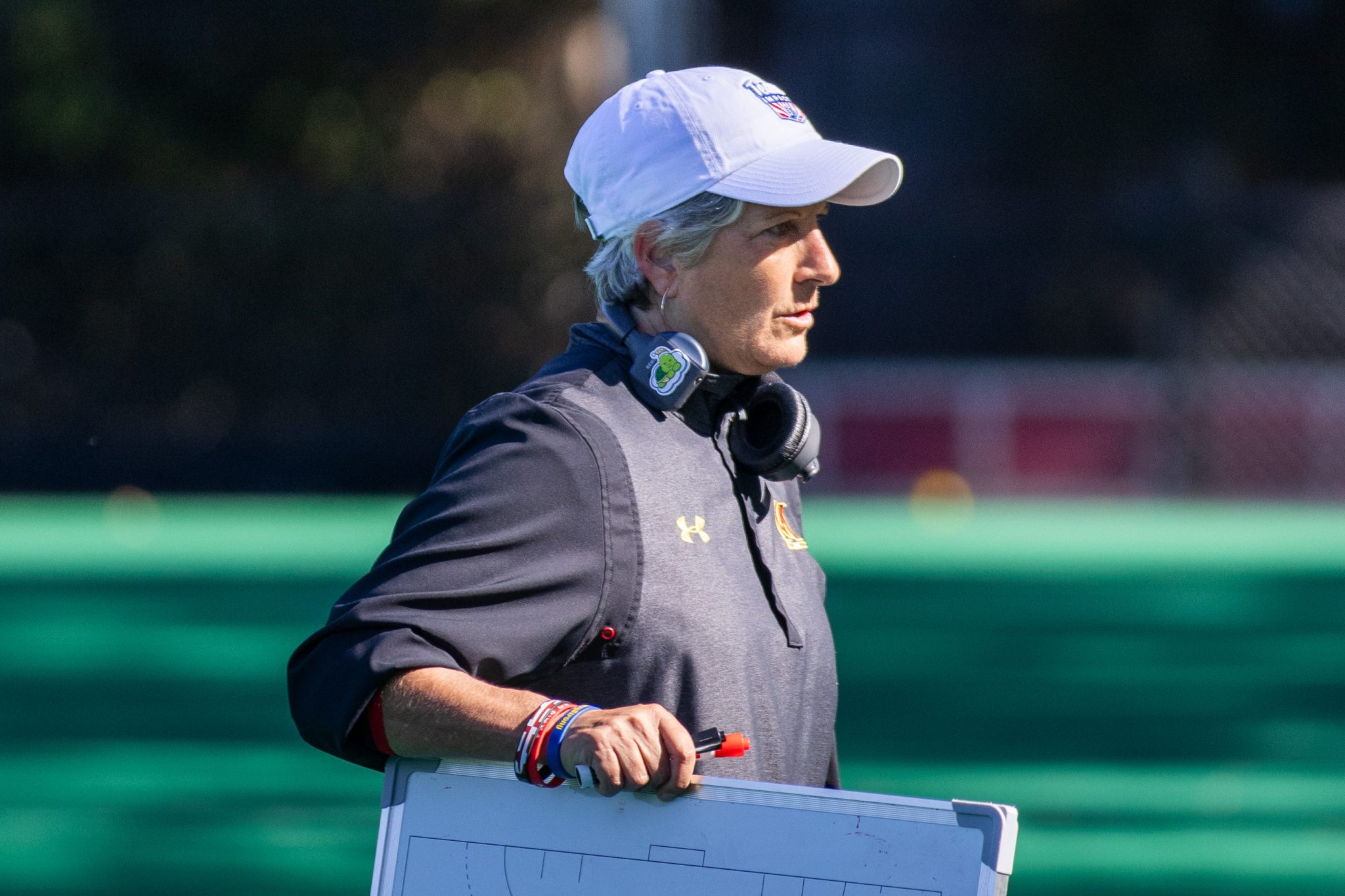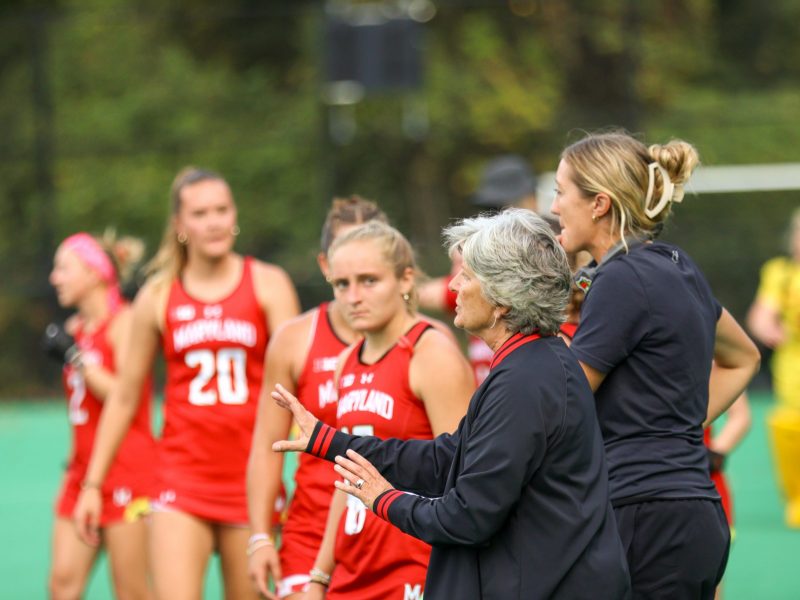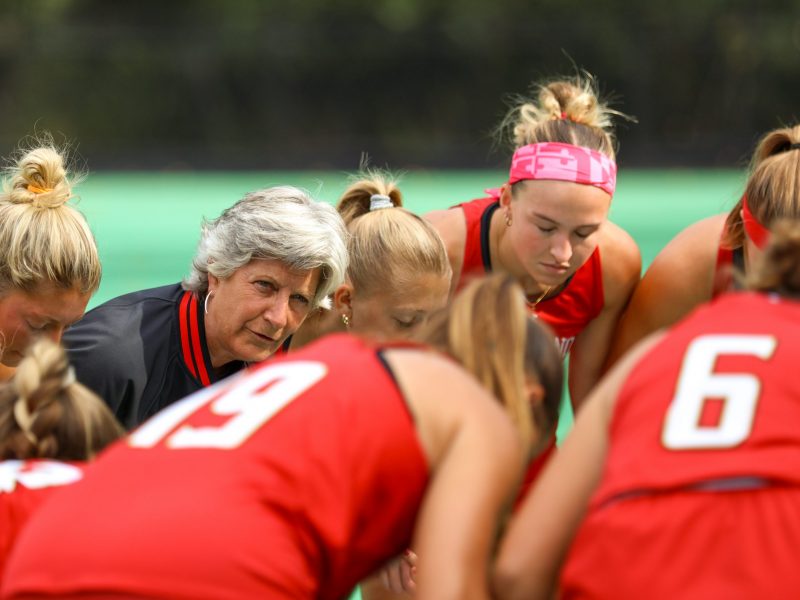Maryland field hockey’s Hope Rose rifled a shot toward the Virginia cage with just six seconds remaining. Defender Mia Abello blocked the midfielder’s attempt off the goal-line in an astounding stick save.
The Cavaliers won that mid-September clash 1-0 — one of several deflating defeats from No. 5 Maryland’s non-Big Ten slate. All three of the Terps’ out-of-conference losses have been one-goal defeats, but those score lines are largely trivial.
Maryland has made pointed adjustments throughout the regular season to address the flaws leading to these results, which is a massive advantage for the Terps entering the Big Ten tournament.
“If you don’t end up having the score on the scoreboard in the end that you [like], many times you learn a ton more about that match than you do with one that you squeak out a win,” coach Missy Meharg said. “All those learning opportunities get lost in celebration.”
The Terps’ 2024 campaign started with an arduous task.
Four of Maryland’s first five games were against ranked opponents. Drexel, the lone unranked contender at the time of the match, holds the No. 17 spot nationally.
Maryland ended its season-opening stretch 3-2 after back-to-back losses to Duke and Virginia.
[No. 7 Maryland field hockey closes regular season with 4-2 win over No. 17 Penn State]
Both defeats were marked by penalty corner woes, with Maryland failing to score across 12 combined chances. But the Terps mitigated their early-season set-piece struggles during conference play, scoring eight of their 21 Big Ten goals via penalty corners.
In its penultimate nonconference match of the regular season against No. 13 Princeton, a sluggish first half hindered Maryland. It struggled to find rhythm after the break and ultimately fell 2-1.
The Terps have relied on early production in their two games since. They tallied three combined first-half scores in wins over Richmond and Penn State.
Nonconference losses to elite opponents helped the Terps develop into a more cohesive unit. Their stacked schedule provided an advantage over many of their Big Ten opponents.
“As players, we love the busyness of the season,” defender Ericka Morris-Adams said. “It’s very short, so we’ll take as many games as we can get and we love the competitiveness of playing different conferences.”
[Transfer Fleur Knopert is leaving her mark on Maryland field hockey]
Maryland’s three-game stretch against formidable top-10 ACC foes Virginia, Boston College and Duke boosted its average nonconference opponent RPI tally, or Ratings Percentage Index. The trio is ranked third, fourth and fifth in RPI, respectively.
Iowa, the Terps’ first round opponent in the Big Ten tournament, only played one nonconference opponent of a similar caliber.
The Hawkeyes faced North Carolina — the highest ranked RPI team in the country — in their second game of the season. Iowa hasn’t played a top-20 nonconference RPI opponent since.
Michigan or Indiana would await in a potential semifinal matchup if Maryland beats Iowa in Thursday’s opening round. The Wolverines and Hoosiers both share underwhelming nonconference slates.
Aside from Michigan’s season-opening loss to North Carolina, neither team has played a nonconference RPI opponent ranked higher than 20.
Maryland hopes for a Big Ten title as the No. 2 seed in the tournament. Northwestern would be its likely opponent in a potential conference championship game. The Wildcats faced the second toughest non-conference lineup amongst Big Ten teams — narrowly trailing the Terps.
The two teams have met in the past two Big Ten tournaments. Northwestern prevailed both times.
“I don’t really care if it’s somebody we’ve beaten or somebody we have lost to,” Meharg said. “Ideally you’d love to get to the final and certainly I’d love to play Northwestern, they’re undefeated. That would be a fun task.”



